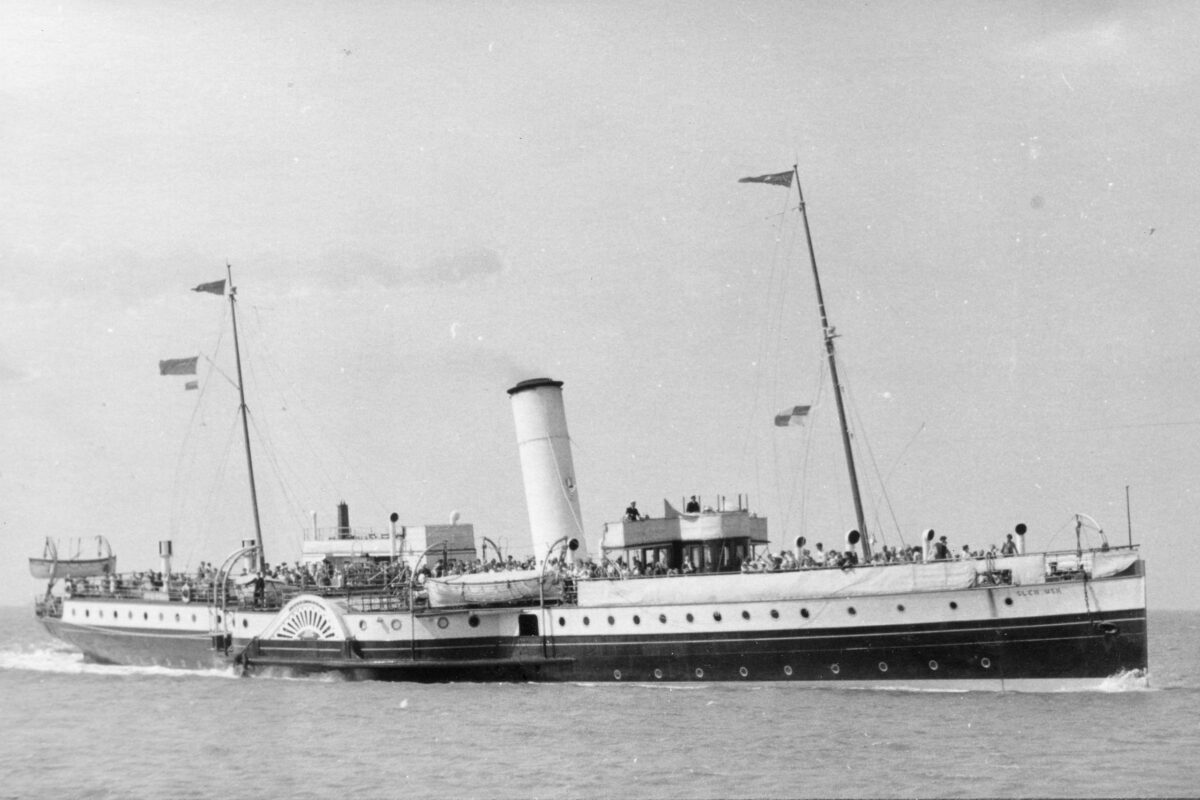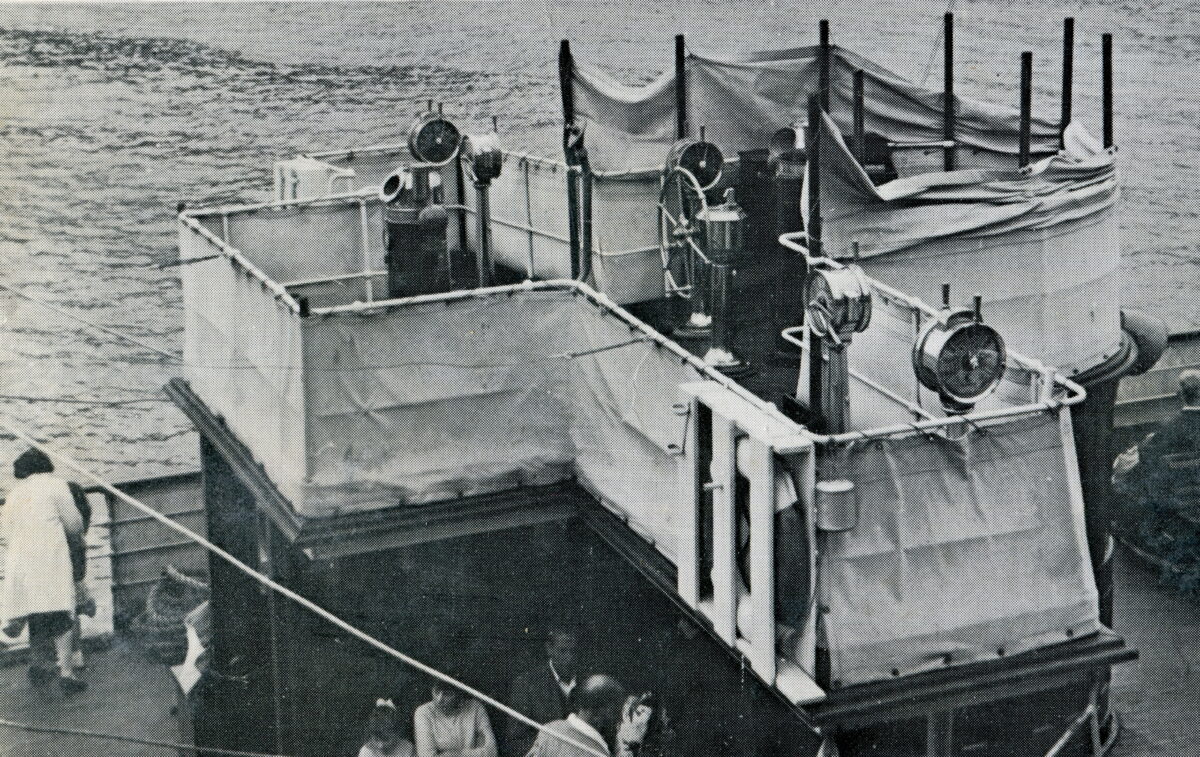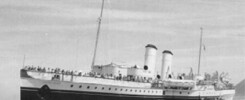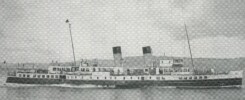
On Wednesday 5th April 1950 Glen Usk opened the Bristol Channel season spending the day running backwards and forwards on the 9 nautical mile crossing between Cardiff in Wales and Weston Super Mare in Somerset limbering herself up for the Easter sailings during the coming weekend.
She had topped up her bunkers with a delivery of an extra 5 tons of coal to her berth at Bristol on Thursday 23rd March. On Monday 3rd April she moved from Mardyke Wall to the basin at Bristol for the final survey with the Board of Trade for the renewal of her Passenger Certificates. On Tuesday 4th she left the basin at 6.40am and passed through the lock under the command of Captain Findlay Brander and proceeded down the Avon to Avonmouth where she called to drop off the compass corrector. She was away at 8am for the 18 nautical mile run across the Channel to Cardiff where she arrived shortly before 9.30am. The rest of the day was spent in final preparations for her first trips on the season the next day on Wednesday 5th April.

I love this picture of Glen Usk’s bridge. It is simplicity itself. Brass telegraphs for the engine movements and docking orders, a brass wheel and binnacle containing the main compass with a second compass for taking bearings at the aft end of the bridge. A voice pipe to the engine room to discuss speed and anything else with the engineer. A small table to contain the log of movements of the ship and the binoculars. No charts or chart table. The captains were supposed to have memorised all the courses and distances plus everything else on the charts although the captain’s cabin below the open bridge was described on the plans as “Captain’s cabin and chart room”. So she did carry charts for reference where necessary.
Compare that with all the stuff you would need to find on the bridge of a Class III passenger vessel today which would have radar, and maybe two radar sets, a chart platter, AIS, perhaps an integrated chart plotter/radar navigation console, an echo sounder for the depths plus a bit of kit to churn out up to date weather information and other navigational warnings and of course a VHF radio and probably a MF radio as well. Then let’s not forget the EPIRB for sending out your position if in distress and a Racon from which other vessel’s radars can pick you up and so on and so forth. It is such a changed world from those simpler days in 1950.
Kingswear Castle returned to service in 2023 after the first part of a major rebuild which is designed to set her up for the next 25 years running on the River Dart. The Paddle Steamer Kingswear Castle Trust is now fund raising for the second phase of the rebuild. You can read more about the rebuilds and how you can help if you can here.
John Megoran
This article was first published on 5th April 2021.


